 W
WThe Sovereign Base Areas of Akrotiri and Dhekelia is a British Overseas Territory on the island country of Cyprus. The areas, which include British military bases and installations, as well as other land, were retained by the British under the 1960 treaty of independence, signed by the United Kingdom, Greece, Turkey and representatives from the Greek and Turkish Cypriot communities, which granted independence to the Crown colony of Cyprus. The territory serves an important role as a station for signals intelligence and provides a vital strategic part of the United Kingdom communications gathering and monitoring network in the Mediterranean and the Middle East. Following UK permission, the United States was given a limited, short-term presence on the British bases between 2013 and 2017.
 W
WThe Berlin Infantry Brigade was a British Army brigade-sized garrison based in West Berlin during the Cold War. After the end of World War II, under the conditions of the Yalta and Potsdam agreements, the Allied forces occupied West Berlin. This occupation lasted throughout the Cold War. The French Army also had units in Berlin, called Forces Françaises à Berlin and the US Army's unit in Berlin was the Berlin Brigade.
 W
WThe Bermuda Garrison was the military establishment maintained on the British Overseas Territory of Bermuda by the regular British Army, and its local militia and voluntary reserves from 1701 to 1957. The garrison evolved from an independent company, to a company of Royal Garrison Battalion during the American War of Independence, and a steadily growing and diversifying force of artillery and infantry with various supporting corps from the French Revolution onwards. During the American War of Independence, the garrison in Bermuda fell under the military Commander-in-Chief of North America. Subsequently, it was part of the Nova Scotia Command until 1868, and was an independent Bermuda Command from then 'til its closure in 1957.
 W
WThe former Britannia Centre Spandau, previously known as British Forces Families Centre (BFFC), was built in 1990 by the PSA for the British Authorities on the site where Spandau Prison was once located.
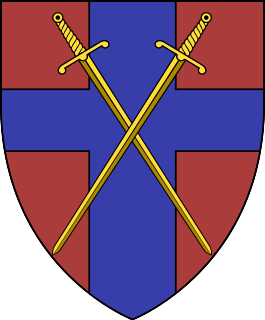 W
WThere have been two formations named British Army of the Rhine (BAOR). Both were originally occupation forces in Germany, one after the First World War, and the other after the Second World War. Both formations had areas of responsibility located around the German section of the River Rhine.
 W
WBritish Army Training Support Unit Belize (BATSUB), the successor of the former British Forces Belize, is the name given to the current (2018) British Army Garrison in Belize. The garrison is used primarily for jungle warfare training, with access to over 5,000 square miles of jungle terrain, provided by the Government of Belize.
 W
WBritish Forces Germany (BFG) was the generic name for the three services of the British military, made up of service personnel, UK Civil Servants and dependents, based in Germany. It was first established following the Second World War the largest parts of it becoming known as the British Army of the Rhine (BAOR) and RAF Germany (RAFG).
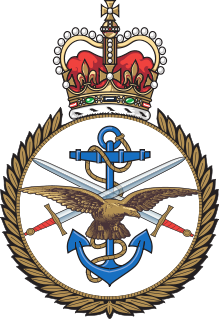 W
WBritish Forces Brunei (BFB) is the name given to the British Armed Forces presence in Brunei. Since the handover ceremony of Hong Kong in 1997, the garrison in Brunei is the only remaining British military base in the Far East.
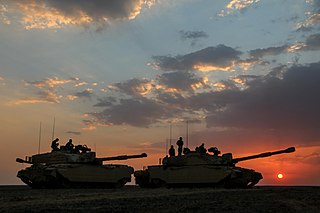 W
WExercise Saif Sareea is a series of military exercises undertaken by the United Kingdom and Oman which first began in 1986 and most recently took place in 2018.
 W
WHQ Northern Ireland was the formation responsible for the British Army in and around Northern Ireland. It was established in 1922 and disbanded, replaced by a brigade-level Army Reserve formation, 38 (Irish) Brigade, in 2009.
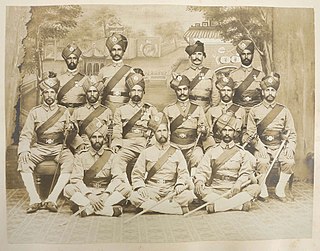 W
WThe Hong Kong Regiment was a British Indian Army regiment seconded to the British Army intended to form part of the garrison of British Hong Kong between 1891 and 1902. It was disbanded in 1902 following a request from the India Office owing to the cost of the regiment.
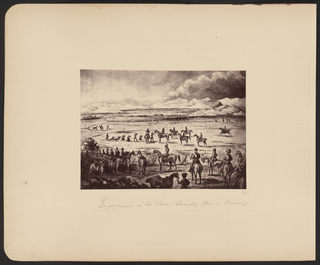 W
WThe Kurram Valley Field Force were the only British troops in Afghanistan when the second phase of the Second Afghan War was set in motion by the murder of Cavagnari and his staff at Kabul on September 3, 1879. They were speedily reinforced by new units and ordered to advance on Kabul with the objective of restoring Abdur Rahman Khan to the throne.
 W
WOperation Banner was the operational name for the British Armed Forces' operation in Northern Ireland from 1969 to 2007, as part of the Troubles. It was the longest continuous deployment in British military history. The British Army was initially deployed, at the request of the unionist government of Northern Ireland, in response to the August 1969 riots. Its role was to support the Royal Ulster Constabulary (RUC) and to assert the authority of the British government in Northern Ireland. This involved counter-insurgency and supporting the police in carrying out internal security duties such as guarding key points, mounting checkpoints and patrols, carrying out raids and searches, riot control and bomb disposal. More than 300,000 soldiers served in Operation Banner. At the peak of the operation in the 1970s, about 21,000 British troops were deployed, most of them from Great Britain. As part of the operation, a new locally-recruited regiment was also formed: the Ulster Defence Regiment (UDR).
 W
WOperation Grapple was the codeword used to cover UK defence operations in support of the UN peacekeeping missions in the former Yugoslavia ; including the deployment of British forces in Bosnia and Croatia from October 1992 until December 1995 as part of the United Nations Protection Force (UNPROFOR). UNPROFOR would eventually hand over the peacekeeping mission in Bosnia to NATO's Implementation Force (IFOR) in winter 1995. The British participation in the IFOR was called Operation Resolute; the whole NATO mission was called Operation Joint Endeavour. The IFOR mission would last approximately a year, before it transitioned to the follow-on Stabilisation Force in Bosnia and Herzegovina (SFOR).
 W
WOperation Herrick is the codename under which all British operations in the War in Afghanistan were conducted from 2002 to the end of combat operations in 2014. It consisted of the British contribution to the NATO-led International Security Assistance Force (ISAF), and support to the American-led Operation Enduring Freedom (OEF). Since 2003, Operation Herrick increased in size and breadth to match ISAF's growing geographical intervention in Afghanistan.
 W
WOperation Shader is the operational code name given to the contribution of the United Kingdom in the ongoing military intervention against the Islamic State of Iraq and the Levant. The operation involves the British Army providing ground support and training to allied forces fighting against ISIL, the Royal Air Force providing humanitarian aid airdrops, reconnaissance and airstrikes, and the Royal Navy providing escort to allied carrier battle groups. Additionally, UK Special Forces have reportedly operated in Iraq, Syria, Libya and Tunisia.
 W
WOperation Toral is the codename for British presence within Afghanistan post-2014 as part of NATO's Resolute Support Mission. UK forces have two major tasks: training and mentoring Afghan Forces, and providing force protection for NATO advisors via the Kabul Security Force/Kabul Protection Unit.
 W
WOperation Trenton was the contribution of the United Kingdom in support of the United Nations Mission in South Sudan. As one of the UK's largest operational deployments at the time, the task force comprised over 300 military personnel. The operation successfully ended in January 2020.
 W
WKnown for most of its operational life as Royal Air Force Gatow, or more commonly RAF Gatow, this former British Royal Air Force station is in the district of Gatow in south-western Berlin, west of the Havel river, in the borough of Spandau. It was the home for the only known operational use of flying boats in central Europe, and was later used for photographic reconnaissance missions by de Havilland Canada DHC-1 Chipmunks over East Germany. Part of the former airfield is now called General Steinhoff-Kaserne, and is home to the Luftwaffenmuseum der Bundeswehr, the German Air Force Museum.
 W
WThe security preparations for the 2012 Summer Olympics—with the exception of the air counter-terrorist plan, which was a RAF responsibility—was led by the police, with 13,000 officers available, supported by 17,000 members of the armed forces. Royal Navy, Army and RAF assets, including ships situated in the Thames, Typhoon jets, radar, helicopter-borne snipers, and surface-to-air missiles, were deployed as part of the security operation. The final cost of the security operation was estimated £553m.
 W
WSt. David's Battery, also known during wartime as the "Examination Battery", was a fixed battery of rifled breech-loader (RBL) artillery guns, built and manned by the Royal Garrison Artillery and the Royal Engineers, and their part-time reserves, the Bermuda Militia Artillery and the Bermuda Volunteer Engineers, part of the Bermuda Garrison of the British Army.
 W
WOperation Telic was the codename under which all of the United Kingdom's military operations in Iraq were conducted between the start of the Invasion of Iraq on 19 March 2003 and the withdrawal of the last remaining British forces on 22 May 2011. The bulk of the mission ended on 30 April 2009 but around 150 troops, mainly from the Royal Navy, remained in Iraq until 22 May 2011 as part of the Iraqi Training and Advisory Mission. 46,000 troops were deployed at the onset of the invasion and the total cost of war stood at £9.24 billion in 2010.